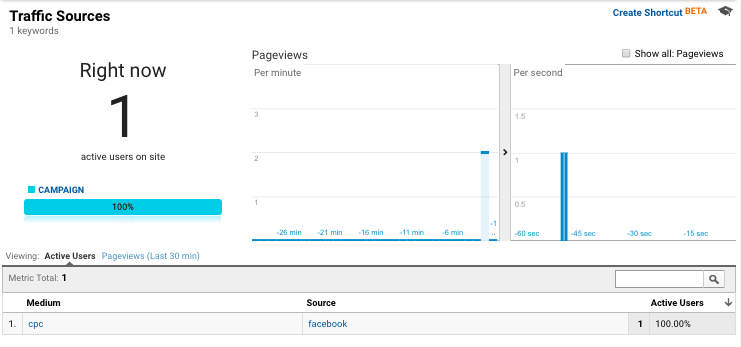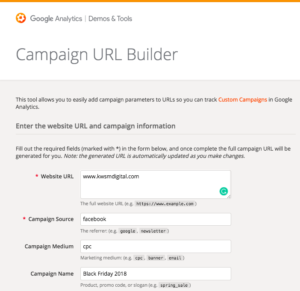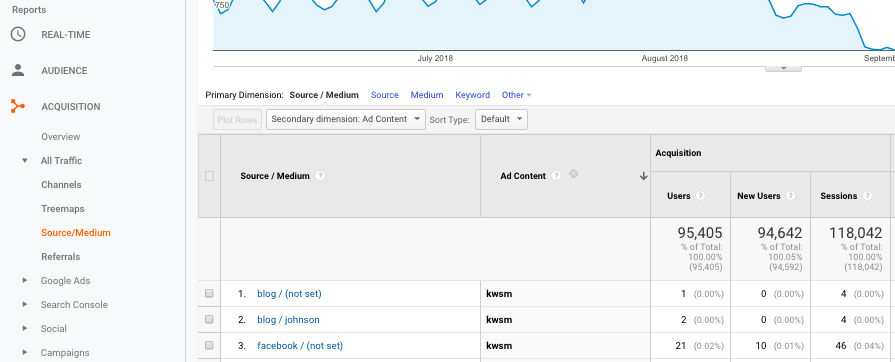
If you use it correctly, you can parse your Google Analytics data to start determining which places, creatives, and offers are bringing in the most people. This data will, in turn, shed light on dark traffic and inform your marketing strategy moving forward.
Let’s take a step back.
Below are some questions to help you understand all of the jargon surrounding UTMs. If you have additional questions, please let us know in the comments below.
What is a UTM code?
A UTM code is a string of unique code that you place at the end of your URL to determine the
source of your click. If you have content on Facebook with a Facebook-specific UTM code, you will see in analytics that Facebook drove those specific viewers. If you applied Twitter-specific UTMs on your tweets, any users that click through to your website would appear in your Google Analytics.
Why should I use UTMs?
Adding UTMs enable you to know where your traffic comes from. Over time, you will start to see trends on what is bringing you the most traffic. This will help inform your marketing strategy because you will know which platforms and content deliver the most website traffic.
What can I track with a UTM?
Most marketers set it up to track a source (think Facebook or Google), medium (things like post, CPC, CPM), and campaign name (like “Black Friday 2018”). You can get more granular by adding a term (to note things down like specific keywords or an audience characteristic) and a content (description of the copy, creative or button in your ad) UTM code.
In the end, your UTM code would look something like this: www.kwsmdigital.com?utm_source=facebook&utm_medium=cpc&utm_campaign=Black%20Friday%202018&utm_term=Moms35-45&utm_content=35off
How do I make a UTM?
There are free tools to make UTMs fairly easily. At KWSM: a digital marketing agency we prefer using the Google UTM URL Builder because it also helps shorten the link after you made it. Shortening your link will simply make it look a little cleaner when you are adding it into your marketing collateral. Another good alternative tool is Facebook’s Google Analytics URL builder.
What do I write for my UTM fields?
You can write anything you want for your UTM fields. But we recommend standardizing what you write, so you can eventually make sense of the data. For example, if you decide to go with “utm_source=facebook”, don’t start labeling your UTMS “=fb” or even “=Facebook.” Google Analytics will show this data as separate UTM sources, which will make reviewing the data much more difficult.
How do I see my UTM data?
Login to your Google Analytics account. Click Acquisition > All Traffic > Source/Medium to see your UTM tracked traffic by source and medium. From there you can drop down the Secondary Dimension and add the Key Term or Ad Content fields, to see that UTM information as well.
Reading the UTM data
Once you see all your UTM information, as explained above, you will need to read it. There is no simple way to explain how to read all your UTM data. But if you would like to find out what your data means, you are welcome to contact KWSM: a digital marketing agency to run a report for you.
35% of Site Visits Were Driven by Search in 2017, Compared to 26% From Social Networks
Do you know where your traffic is coming from? At KWSM: a digital marketing agency, we optimize our client’s digital marketing strategies based on where the traffic is coming from and what they do on their website.
CONTACT US for a free 30-minute social media marketing audit.














